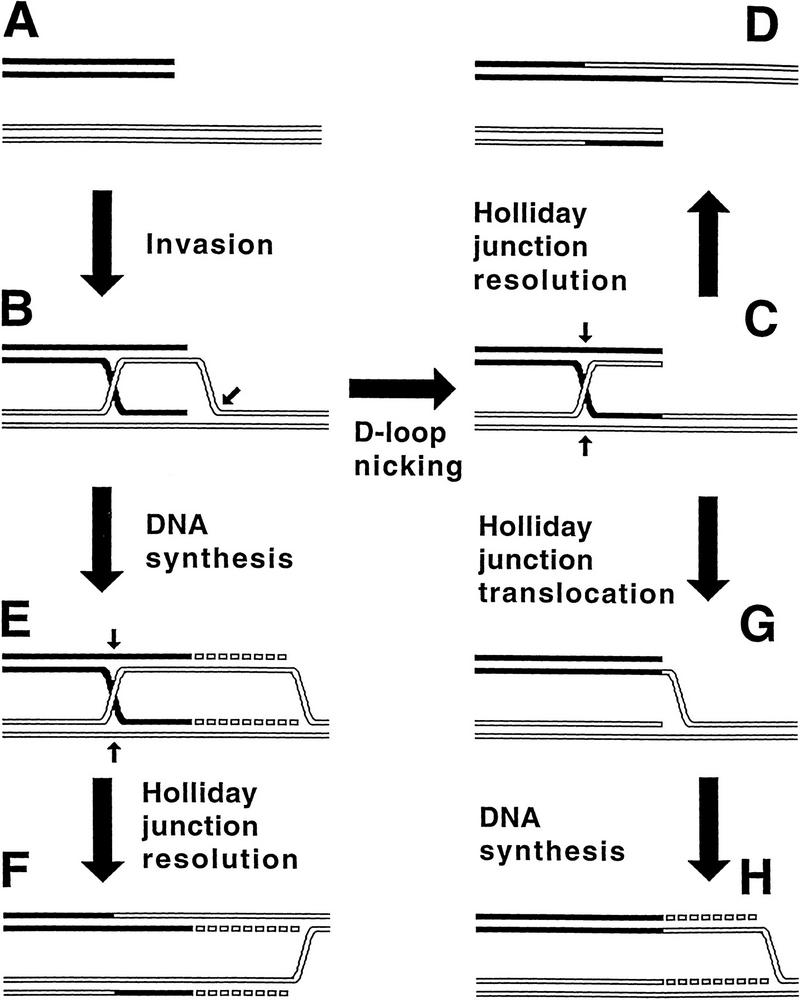Figure 8.

Exchange (break–join) versus repair (break–copy) in contemporary schemes of recombination. A–D represents the break–join, exchange-oriented pathway (Clark and Sandler 1994; Kowalczykowski et al. 1994; Taylor and Smith 1995; Eggleston and West 1996), whereas A, B, E, and F (Asai et al. 1993; Kuzminov 1995a; Cox 1998) or A–C, G, and H (Kuzminov 1996b) are the break–copy, repair-oriented pathways. DNA duplexes are depicted as double lines; the strands to be cut are indicated by small arrows. For simplicity, only one of the two possible orientations of Holliday junction resolution is shown. (A) Two homologous DNA duplexes, the black one with the double-strand end, the white one intact; (B) the double-strand end, with the help of homologous pairing activity of RecA protein, invades the intact duplex; (C) the intact duplex is nicked in the invasion loop, and one of the invading strands is linked with the nicked strand; (D) the Holliday junction is resolved, yielding two recombinant DNA molecules; (E) the invading end primes DNA synthesis; (F) the Holliday junction is resolved, completing the replication fork; (G) the Holliday junction is removed by sliding towards the double-strand end, which creates a replication fork framework; (H) DNA synthesis begins at the replication fork framework.
